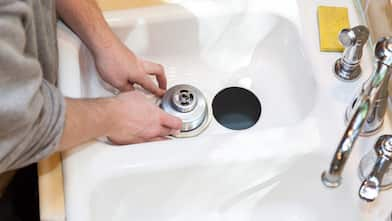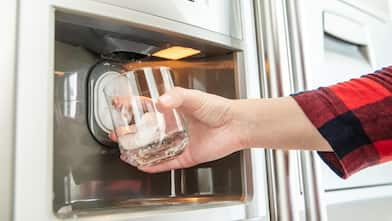Highlights
The standard washing machine drain size is 2 inches, and the minimum requirement is 1 1/2 inches.
Modern washers typically require a larger drain, and you may need a larger drain if it’s connected to your kitchen sink.
Standpipes should be between 18 and 30 inches from the floor.
Some standpipes require ventilation, while others don’t.
Ensure the drainage system is in working order to get the most out of your washer and avoid a troublesome leak. This guide will help you determine whether your washing machine drain is the correct size and up to code, check the height of your standpipes, and know when to call in a pro.
What Is the Standard Washing Machine Drain Size?
According to the Universal Plumbing Code, the standard drain size for a washing machine is 2 inches. The absolute minimum should be about 1 1/2 inches. However, keep in mind that wash load capacities can vary by up to 400% or more depending on the model. You may want a larger drain to ensure your machine can handle larger, multiple loads and avoid drainage problems.
Common Washing Machine Drain Code Errors
Washing machines pump water into the drum and constantly cycle water in and out to clean your clothes. The more powerful the machine, the more water it’s pumping. With most newer models, you need a drainpipe that’s wide enough to handle these loads.
If your washing machine connects to your kitchen sink, you’ll need a 3-inch hose drain. However, if your washer and kitchen sink are separate units, you’ll only need to use 1 1⁄2 inches of pipe and a 2-3⁄4-inch trap to dispose of used water.
“Most jurisdictions require the installation of an overflow drain pan for washing machines on the second floor or higher,” says Bob Tschudi, Expert Review Board member and Raleigh, NC-based general contractor. “Regardless of the washing machine location, we always install a drain pan, as the potential water damage far outweighs the cost of putting in the pan and drainage system.”
How High Should Standpipes Be From the Floor?
Different states may have different rules and regulations on how high a standpipe must be from the floor. Generally, it should be between 18 and 30 inches from the floor. The water volume could pull the trap dry if it's any higher than that.
The standpipe connects the drain hose to the sewer line. It keeps the water level in the washing chamber below the drain to control the flow of water. The P trap should be 6 to 18 inches from the floor.
How to Attach the Trap and Standpipe
Glue traps are a good option, particularly a threaded one that can swivel. You’ll attach it to the piece of pipe coming out of the wall by priming both the pipe and the trap first, and then applying glue and attaching the trap. Use a level to check that the trap is straight, and then attach the standpipe. Again, check it with a level to ensure it’s straight.
Should Standpipes Be Vented?
Some professionals will suggest that standpipes within washing machine drains require ventilation, which allows air to enter, limits odor buildup, and discourages insects from getting into your home.
“There are alternatives to fully venting,” says Tschudi. “In many instances, we use an ‘air admittance valve’ or ‘studor vent,’ which prevent sewer gasses from coming out but don’t require outside ventilation.”
Most homeowners don’t need to vent standpipes in their drains because water rarely sits still within these pipes. Check your local codes, and consider scheduling annual checkups with a local plumber or drain cleaning service in your area.
When in Doubt, Contact a Pro

If you’re concerned that your washing machine drain is not up to code, or you just suspect that your washing machine needs repair, contact a washing machine repair pro near you to come out and take a look. They can advise you on the next steps and provide you with a quote for doing the work.





